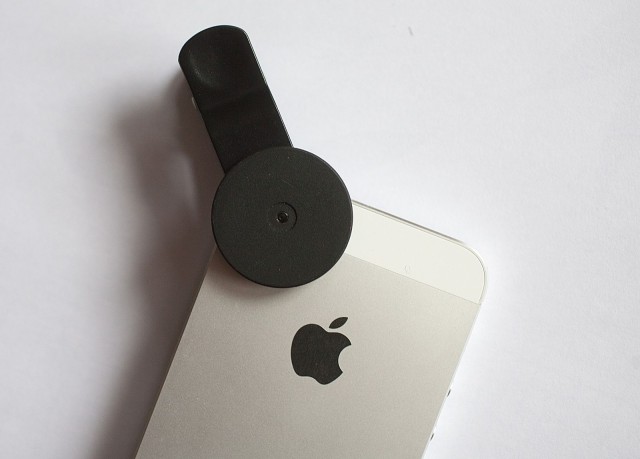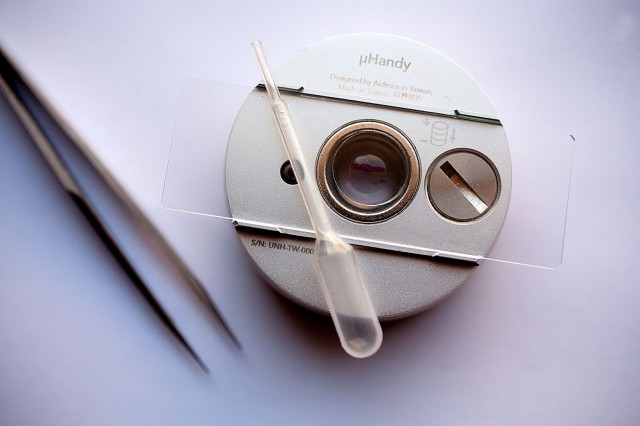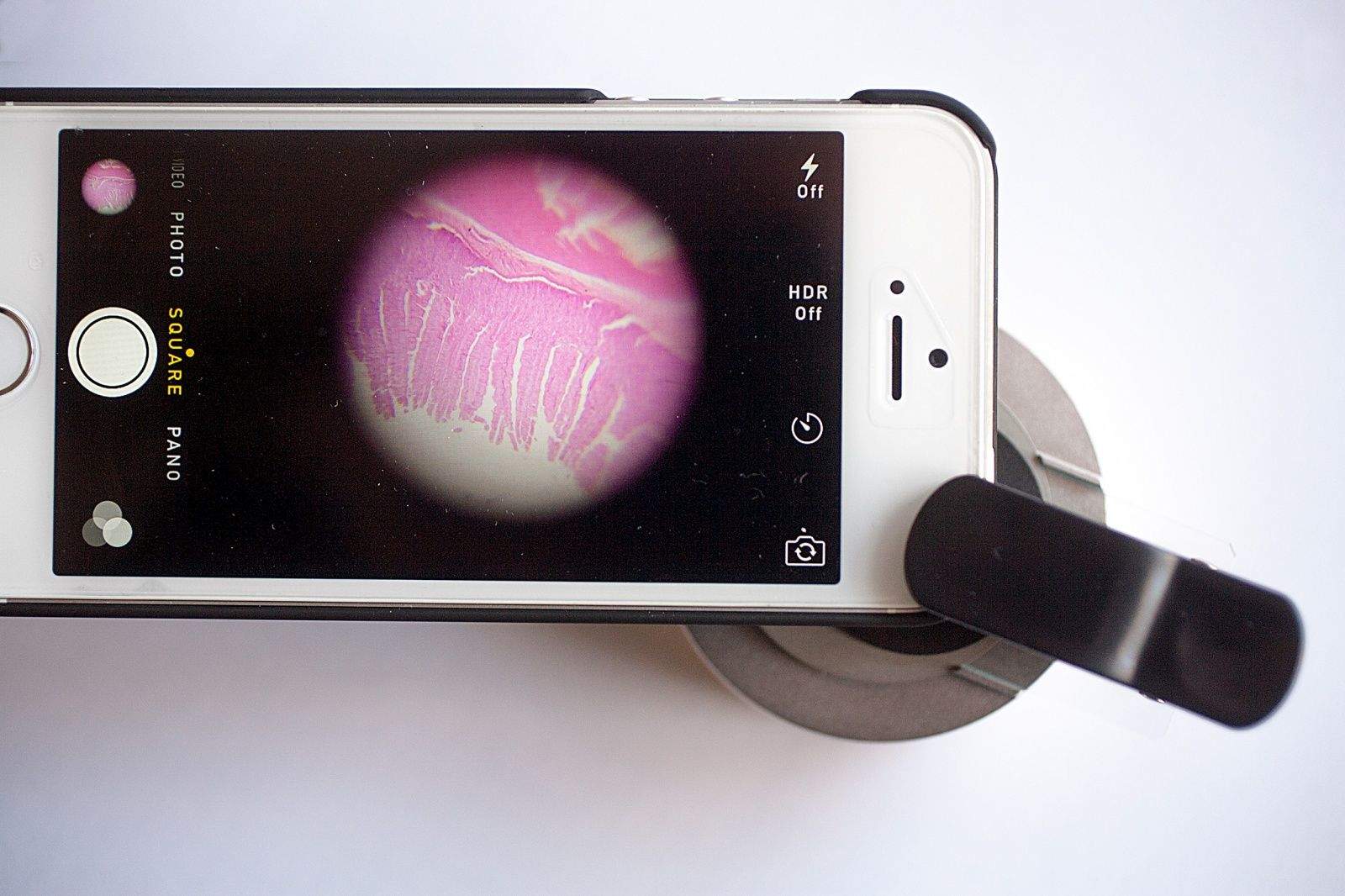Humankind is not depending on me to cure some terrible epidemic. That takes the pressure off and lets me have a little fun as I try a device that turns my iPhone into a fairly powerful microscope.
With a clip-on aspheric lens and transmitted light base that weighs only a few ounces, the makers of uHandy Microscope boast of it having a resolution comparable to a traditional microscope that weighs down a lab table in a classroom.
Samples can be magnified and viewed in the field using your smartphone’s camera app to record the image and, of course, an instant ability to share the image with colleagues in other places.

More and more companies are developing hardware, rather than apps, to expand the capabilities of devices. Aidmics Biotechnology of Taiwan, which makes the uHandy, also makes a sperm analyzer with a 200x microscope and free accompanying app for sperm tracking.
The uHandy costs around $200, more expensive than some entry-level microscopes but certainly more affordable than devices used in high-end research labs. The kit comes with the clip-on lens, a base that shines a light powered by three alkaline cell batteries and a slide-preparation kit that includes glass slides, coverslips, tweezers, an eye dropper and two magnetic slide holders.

The clip-on lens is limited to smartphones and tablets where the center of the camera is 2.4 centimeters or less away from the edge. For iPhones and iPads, Aidmics offers a case where the lens screws into the camera opening.
The microscope can be used without the base on a device’s front-facing camera, providing there is a light source above to shine through the sample, such as dried leaf or an onion skin.
My skills at preparing slides for a microscope are dubious at best. I broke all the delicate square cover slips in making images for this review. Some of my samples were uneven and maybe too thick; you might spot a stray hair or specks of dust in some of the pictures.
If you like Sriracha sauce, you may not want to look at the gallery below.
Once you prepare a slide, set it on the base. A steel, magnetic holder goes over the slide and as it snaps into place, it activates the light.
With the lens on your smartphone or tablet, a magnet will lock it down. With your camera app open, a vignetted image will appear. This can be eliminated as you use your thumb and forefinger to zoom in on the image. For some of my samples, I left them vignetted because I liked how they looked.
I hunted high and low for some kind of bug and was only able to come up with a dead fly. One of its wings turned out to be one of my favorite images. I also made slides of road salt, a turnip past its prime and a hydrangea petal.
https://youtu.be/ycJl-yUykcs


